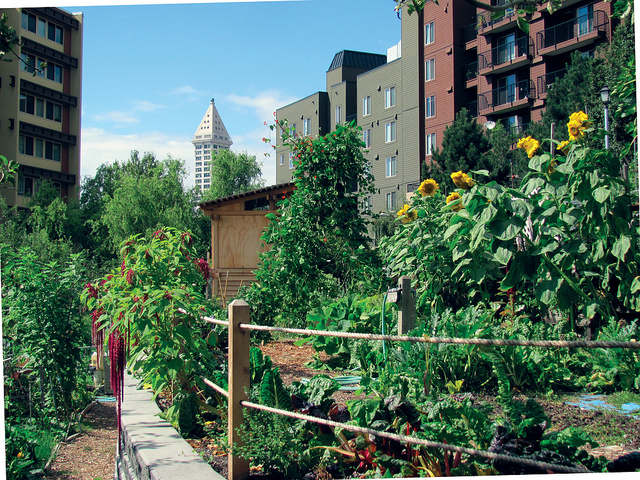City Blooming Things To Know Before You Buy
City Blooming Things To Know Before You Buy
Blog Article
The Best Guide To City Blooming
Table of ContentsThings about City Blooming10 Simple Techniques For City BloomingThe Ultimate Guide To City BloomingThe 5-Second Trick For City BloomingTop Guidelines Of City Blooming
Interested in expanding food for sale in the City of Chicago? Below is a listing of regularly asked inquiries relating to the guidelines and policies that cultivators must take into consideration when preparing a city agriculture job.
The zoning modification does not modify any type of other codes managing composting, building authorizations, buying or leasing City possessed residential property, company licenses or ecological contamination. There are existing codes that manage these issues and they remain in complete impact and may apply to your project. Community yards are generally possessed or managed by public entities, civic companies or community-based organizations and maintained by volunteers.
Urban ranches expand food that is meant to be offered, either on a nonprofit or for-profit basis. As a result of their business function, metropolitan farms require a business license. Yes. A neighborhood garden is enabled to market surplus produce that was expanded on site if the sales are accessory or subservient to the garden's primary purpose explained over.
Indicators on City Blooming You Should Know
Composting is enabled however just for plant product that is created and utilized on website. The amount of garden compost product can not exceed 25 cubic lawns at any kind of offered time according to the standards in 7-28-715 of the City's Municipal Code. Yes. Since the soil at most new yard websites needs amending, compost, dirt, wood chips, or other materials can be gotten to construct or enhance the growing area - sustainability.

If a structure permit is called for after that the hoophouse will be thought about an accessory structure. You can discover even more concerning the structure permit requirements by contacting the Division of Structures. The 25,000-square-foot dimension limit is intended to stop a single area yard from controling an offered block or diminishing the block's existing household or commercial personality.
The limit does not relate to yards located in Public Open Area (POS) districts. Can there be greater than one neighborhood garden that is 25,000 square feet on a single block? Yes. The dimension limitation relates to individual gardens, not to specific blocks. No. Fencing is not needed, nevertheless, yards that have big parking lot might be needed to set up fencing or other landscape design attributes.
9 Easy Facts About City Blooming Shown
B1 & B2 areas need that all commercial use activities be conducted inside. Is fencing required for city farms? Fencings may be needed, along with landscape design and testing, for specific car park areas and outdoor work or storage space locations depending on place and the certain task taking place.
Yes. Urban farms require building licenses and zoning authorizations before building and construction. Other types of city Continue review might be called for depending on particular frameworks, activities, size, landscaping, licensing, public health and stormwater monitoring problems. Most of these demands are identified in the project design or allowing process, nevertheless, the candidate might be liable to individually recognize details licenses or permits that may be needed.
The Division of Company Matters and Consumer Protection can help determine the particular type of organization permit that's called for. Off street parking is needed for a lot of industrial projects in Chicago. The called for number of vehicle parking areas is based on the number of staff members working on website and not the square footage of the expanding space.
City Blooming - The Facts

Yes. An urban ranch can sell compost product generated on site, nevertheless, the operation should comply with the policies in 7-28-715 of the Chicago Municipal Code. Yes. Aquaponic systems are permitted inside your home on urban farms in lots of zoning districts. However, a zoning evaluation and structure permit is required in order to install frameworks or systems and a service permit is needed as defined over.
Approximately 5 hives or nests of honey bees may be kept as an accessory use. Beekeepers should sign up with the Illinois Division of Farming. To learn more concerning the proposed zoning amendment you might speak to the Department of Housing and Economic Growth, Bureau of Planning and Zoning at 312.744.8563.
Farming in cities and urban locations An urban ranch in Chicago. Urban agriculture refers to numerous techniques of cultivating. https://www.find-us-here.com/businesses/City-Blooming-San-Francisco-California-USA/34090046/, processing, and dispersing food in city areas. The term additionally puts on the area activities of animal husbandry, tank farming, beekeeping, and gardening in a city context. Urban agriculture is distinguished from peri-urban farming, which happens in backwoods at the side of suburban areas.
Not known Facts About City Blooming
, that look for to create social networks founded on a common principles of nature and area holism. These networks can develop by way of formal institutional assistance, ending up being integrated into regional community planning as a "change town" motion for sustainable metropolitan advancement.
The more direct accessibility to fresh veggie, fruit, and meat products that may be know via city farming can enhance food safety and security and food security while reducing food miles, leading to reduced greenhouse gas discharges, thus adding to climate adjustment reduction. Several of the first proof of metropolitan farming originates from Mesopotamia.
Report this page